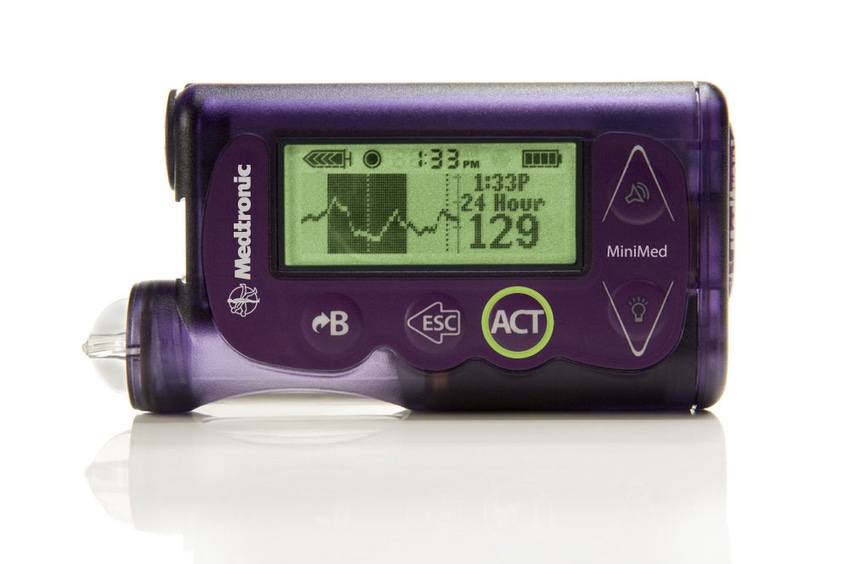Medtronic's first-generation artificial pancreas isn't the medical device the diabetes community was waiting for. But that doesn't mean it's not an important step forward.
October 21, 2013

In September, exuberant headlines heralded FDA approval of the first artificial pancreas, prompting many patients with type 1 diabetes to revel in the realization of a long-awaited fantasy that has promised to revolutionize diabetes management. The problem, however, is that Medtronic’s MiniMed 530G isn’t that dream device.
Touted by Medtronic as “a breakthrough, first-generation artificial pancreas system,” the MiniMed 530G with Enlite automatically ceases basal insulin delivery for up to two hours if a patient does not respond to an alarm triggered when sensor glucose values drop below a preset threshold. While a significant step forward on the path to the “ideal” artificial pancreas, threshold-suspend technology is a relatively far cry from the fully automated, closed-loop system that has become synonymous with the term. It has also been available in Europe—with only minor differences—since 2009 under the MiniMed Veo brand.
So, it’s not surprising that confusion reigned in the diabetes community in response to the news. While the media’s misinterpretation of the verbiage is somewhat to blame, the muddy messaging really stems from FDA’s classification of threshold-suspend device systems as a type of artificial pancreas device system.
Hear senior Medtronic employees discuss product evolution development at MD&M Minneapolis, October 28-30. |
Frustrated with the misunderstanding and hype around the 530G, Leighann Calentine, author of the D-Mom Blog, which focuses on her experiences as the parent of a diabetic child, vented in an October 4 post. “The Medtronic 530G does one thing now that other existing products on the market do not do…It’s not a game changer,” she wrote. “Of course, it’s great that the first milestone on the way to an FDA-approved artificial pancreas has been reached. But, like I’ve said, it’s a first step. There’s no reason to throw a party.”
And while Medtronic may not want to break out the party hats just yet, a celebratory dinner is in order, at least. As it turns out, that “one thing” that differentiates the 530G from its predecessor—threshold-suspend technology—could actually be a game changer.
In the ASPIRE in-home study, Medtronic pitted the 530G against its predecessor, the MiniMed Revel insulin pump. Results showed a 37.5% reduction in the area low with the 530G versus the predecessor as well as a 31% reduction in frequency of events. The study also revealed a reduction in serious hypoglycemic events—defined as low events that require the aid of another person to come out of the event—as well as no worsening of overall average blood sugars.
Beyond these data, the 530G is significant because it is the first major milestone on Medtronic’s multiyear roadmap to the fully automated artificial pancreas. “We think that it would be very difficult to go from completely open loop to completely closed loop in one step,” says John Mastrototaro, vice president of research, technology, and business development, and chief technology officer at Medtronic Diabetes. “We’ve taken the strategy from the very beginning that we’re going to be working in a stepwise fashion with regulatory bodies. We think that makes the most sense from a patient safety perspective as well as being able to partner with regulatory bodies to get it approved.”
Given the current regulatory environment and the uncharted territory ahead, it’s a strategy that makes sense. Medtronic aims to release the second-generation product overseas in early 2014. Rather than waiting to hit the lower threshold, predictive shutoff functionality suspends insulin delivery in response to downward trends to bypass a hypoglycemic event entirely.
By leveraging an algorithm that Mastrototaro says is very close to being defined, Medtronic will introduce overnight closed-loop control in the third generation. The final step would then be extending that closed-loop control throughout the day. But to produce an around-the-clock, fully automated artificial pancreas, reliability improvements and significant sensor enhancements such as automatic diagnostics are still needed, according to Mastrototaro.
With all the focus on what the 530G isn’t—namely a fully automated artificial pancreas—people seem to have lost sight of what the device actually is: the beginning of a major paradigm shift in diabetes management. And that’s a game changer.
Medtronic employees will discuss product evolution development and design of implantable devices at MD&M Minneapolis, October 28-30. |
--Shana Leonard, executive editor
[email protected]
You May Also Like


